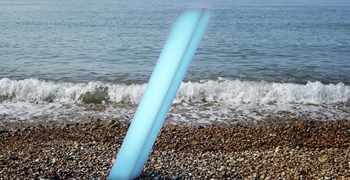"Mental cases", parasites, brandy injections and food complaints: First World War hospital ship diaries go online
This article originally appeared on Culture24.
More than 200 war diaries of hospitals and hospital ships for soldiers and animals have been put online, covering the First World War to 1920
 © National Archives
© National ArchivesThis war diary for HMHS Erinpura (above) reveals that, in just 15 voyages throughout 1918, the ship had carried "6,126 sick and 4,067 troops" – making a total of 10,193 people on board.
 © National Archives
© National ArchivesThe war diary for the Anglia reveals many details about the voyage including the list of officers on board and the final diary entry, dated October 31 1915, before the rest of the log went down with the ship. “Received order to prepare Officers Ward for the use of HM The King and make such other preparations as might be necessary for his comfort,” it records.
 © National Archives
© National ArchivesIn the years following Armistice, as they attempted to return home from across the world, sometimes as late as 1920, there are what curators call “eye-opening” accounts of how people with mental health issues and other disabilities were treated, particularly between the different ranks.
 © National Archives
© National Archives“Lunatics 44 O.R. [other ranks] and 1 Naval rating. The 2 Mental Officers are placed in isolation self-contained ward with WC and bathroom – excellent for this purpose.”
 © National Archives
© National ArchivesThe diaries sometimes include complaints about hospital food, especially with the introduction of unknown local food. This entry, from just after Christmas, mentions “troublesome delusions”, a straitjacket being issued, a complaint about “very doughy” bread and a concert following extra dinner for all ranks on New Year’s Eve.
 © National Archives
© National Archives“Thendis and Brinjals in lieu of potatoes...explained that locally purchased vegetables were the only kinds now available and any frivolous complaints would result in being put on strict rations for one week,” it reports.
 © National Archives
© National ArchivesOther international regiments covered by the diaries include the Indian, Canadian and New Zealand forces. Special catering was required for different religious ceremonies, such as facilities to cremate the Hindu dead.
 © National Archives
© National Archives“I am in possession of a pair of midwifery forceps”, it adds, before highlighting more “labour pains” on December 12 1918.
 © National Archives
© National Archives“This has been a very heavy voyage, sever climatic conditions added to a heavy load and there has also been a great deal of sickness among the staff.”
 © National Archives
© National ArchivesBut this extract has an officer describing the Indian Army as a “dumping ground” for the “dead weight” of 3,000-3,500 men, many of whom had self-inflicted injuries and resisted treatment in the hope they would return to India.
 © National Archives
© National ArchivesJameson applied “injections of hot water and brandy per rectum”, as well as “numerous potassium permanganate pills”. They may have had some effect: the patient’s pulse and general condition, according to the Major, “improved considerably”.
- The National Archives has digitised war diaries of 247 hospital camps, hospital ships, convalescent hospitals and veterinary hospitals in the First World War, making them available globally for the first time. Part of UK Disability History Month.
What do you think? Leave a comment below.
Three museums and galleries to see First World War stories in
Yorkshire Sculpture Park
Wave is a sweeping arch of bright red poppy heads suspended on towering stalks; Weeping Window (to be shown at Woodhorn Museum, Northumberland and St George’s Hall, Liverpool) is a cascade comprising several thousand handmade ceramic poppies seen pouring from a high window to the ground below. Until January 10 2016.
Porthcurno Telegraph Museum, Cornwall
See artefacts recovered from shipwrecks and find out what sort of ships lie on the seabed and how they came to be there in the current exhibition, Forgotten Wrecks of the First World War. Until March 21 2016.
Royal Pavilion, Brighton
From December 1914 to February 1916, the Royal Pavilion was offered for use as a hospital for troops from the Indian Corps wounded on the Western Front in France and Flanders during World War I. See paintings, archive photographs, contemporary accounts and film footage recall in vivid form a remarkable and often forgotten story from Brighton’s history.












